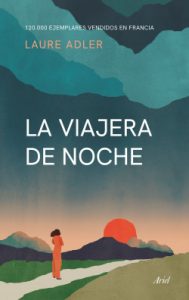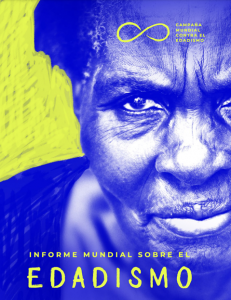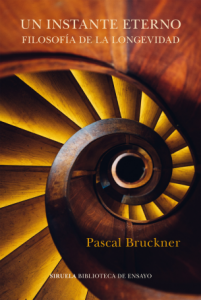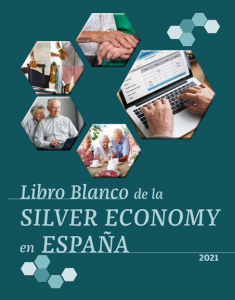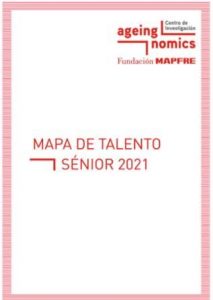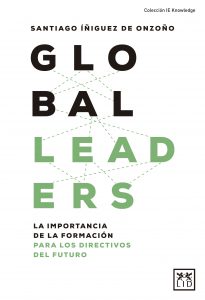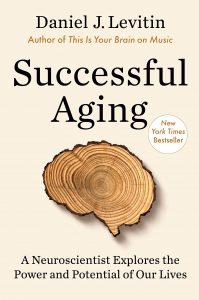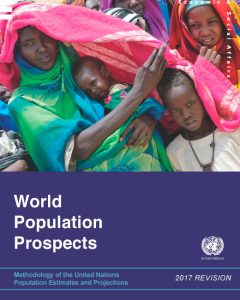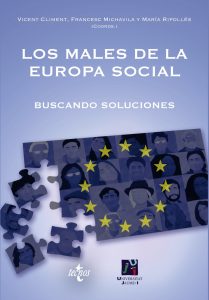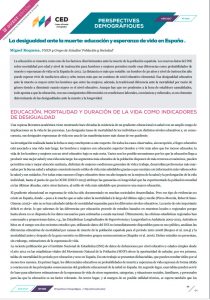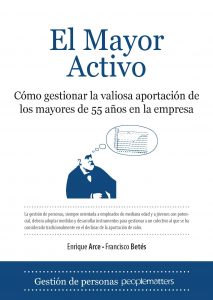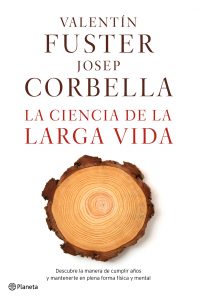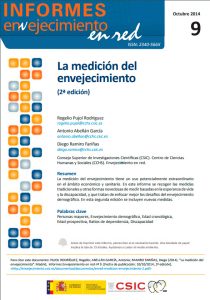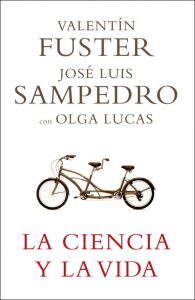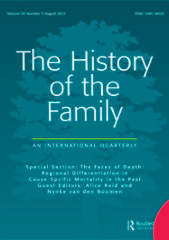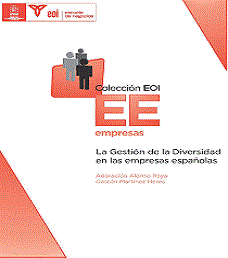
The Observatory recommend some books and reports of scientific divulgation:
La viajera de noche
By: Laure Adler
DATE: 2022
Un relato íntimo cargado de lúcidas reflexiones sobre lo que significa envejecer.
Actualmente cumplir años se ha convertido en una desgracia o, como mínimo, en un proceso que la sociedad rechaza y silencia. Frente a esta realidad, esta hermosa obra nos revela no solo los estereotipos y prejuicios que rodean la edad madura, sino el valor que pueden tener el sentimiento de finitud y la experiencia de lo vivido.
Informe mundial sobre el edadismo
By: Organización Mundial de la Salud
DATE: 2022
El Informe mundial sobre el edadismo provee un marco de acción para reducir el edadismo, incluidas recomendaciones específicas para diferentes actores (por ejemplo, gobierno, agencias de la ONU, organizaciones de la sociedad civil, sector privado). Reúne la mejor evidencia disponible sobre la naturaleza y magnitud del edadismo, sus determinantes y su impacto. Describe qué estrategias funcionan para prevenir y contrarrestar el edadismo, identifica brechas y propone líneas de investigación futuras para mejorar nuestro conocimiento sobre el edadismo.
Un instante eterno
By: Pascal Bruckner
DATE: 2021
El reconocido filósofo Pascal Bruckner plantea en este lúcido ensayo cómo los avances de la ciencia han hecho del tiempo un aliado paradójico para el ser humano; desde mediados del siglo XX, la esperanza de vida ha aumentado de veinte a treinta años, equivalente a toda una existencia en el siglo XVII.
Es al llegar a los cincuenta años cuando experimentamos una suerte de suspensión entre la madurez y la vejez, un intervalo en el que la brevedad de la vida realmente comienza ya que nos planteamos las grandes cuestiones de nuestra condición humana: ¿queremos vivir mucho tiempo o intensamente, empezar de nuevo o reinventarnos? ¿Cómo evitar la fatiga del ser, la melancolía del crepúsculo, cómo superar las grandes alegrías y los grandes dolores? ¿Cuál es la fuerza que nos mantiene a flote contra la amargura o el hartazgo?
En esta obra, ambiciosa e imprescindible, Bruckner fundamenta sus reflexiones en estadísticas y en diversas fuentes de la literatura, las artes y la historia; así, nos propone una filosofía de la longevidad fundada en la resolución, y nunca en la resignación, para vivir esta vida extra de la mejor manera posible.
Libro Blanco de la Silver Economy en España
By: Comisión de Silver Economy del clúster Madrid Capital FinTech (MAD FinTech) y Foro ECOFIN
DATE: 2021
El Libro Blanco de la Silver Economy en España ha sido elaborado por un grupo de 14 expertos que analiza, sector a sector, la influencia de la generación de los mayores de 55 años en la economía española. El libro blanco pone en relieve la importancia de la economía de los silver en un país a la cabeza del ranking de longevidad y esperanza de vida. A tenor de los datos sobradamente conocidos, la generación posee el mayor patrimonio, sobre todo concentrado en el sector inmobiliario, más capacidad de consumo tiene y por lo tanto más riqueza genera en la sociedad.
MAPA DE TALENTO SÉNIOR 2021
By: Fundación MAPFRE
Muchos adultos mayores de 55 años ejercen una actividad productiva. El talento sénior encuentra en el mercado laboral una vía para desarrollarse y esa es una buena noticia. Cada vez son más los séniores que emprenden y trabajan en nuestro país. Millones de ellos siguen en activo y trabajando por su cuenta o asalariados; decenas de miles son emprendedores sénior. Pero todavía queda mucho camino por recorrer para aprovechar en España todo el talento sénior. De hecho, estamos lejos de los países más avanzados.
Esta investigación pretende conocer la población sénior que trabaja por cuenta propia, por cuenta ajena o bien está emprendiendo en España. Este Mapa de Talento Sénior nace con vocación de continuidad para poder medir la evolución de este fenómeno. Además, en esta primera edición, de cara a comprobar si la pandemia de la COVID-19 ha afectado especialmente a este colectivo sénior en lo referente al mercado de trabajo, se ha analizado monográficamente la herramienta de los ERTE y el uso del teletrabajo. Por último, y a modo de inspiración, se han seleccionado buenas prácticas de gestión del talento sénior en grandes empresas globales.
INFORME DE TENDENCIAS: LOS SÉNIOR EN ESPAÑA 2021.
By: Silver Economy Consulting (SEC)
Este último estudio “Informe de tendencias: Los sénior en España”, a diferencia de los anteriores realiza una aproximación al perfil vital de los mayores de 55 años: de qué manera viven, qué consumen y cómo sienten. Silver Economy Consulting (SEC) lo realizó a partir de investigaciones propias y fuentes de terceros, pretendiendo mostrar las principales tendencias que caracterizan al colectivo sénior proponiendo y ofreciendo explorar las necesidades y oportunidades económicas y sociales que proporciona ver la edad con otra mirada.
Este estudio concluye que hay muchas oportunidades para que las empresas y las instituciones, públicas y privadas, innoven. Las empresas tienen la oportunidad de adaptar sus productos o servicios y su comunicación para llegar a un colectivo que, por otro lado, va a ser todavía el más numeroso y que tiene el mayor nivel de renta y por ello rompe una serie de tópicos asociados al colectivo de mayores de 55 años y pone de manifiesto una generación sénior preocupada por su apariencia, su alimentación, su entorno…
The Science and Technology of Growing Young
By Sergey Young
PUBLISHER: Penguin Random House
The prospect of living to 200 years old isn’t science fiction anymore. A leader in the emerging field of longevity offers his perspective on what cutting-edge breakthroughs are on the horizon, as well as the practical steps we can take now to live healthily to 100 and beyond.
In The Science and Technology of Growing Young, industry investor and insider Sergey Young demystifies the longevity landscape, cutting through the hype and showing readers what they can do now to live better for longer, and offering a look into the exciting possibilities that await us. By viewing aging as a condition that can be cured, we can dramatically revolutionize the field of longevity and make it accessible for everyone.
Global Leaders: La importancia de la formación para los directivos del futuro
By Santiago Íñiguez de Onzoño – President, IE University
¿Sabías que el 40 % de las empresas españolas no encuentra profesionales con la formación y las capacidades necesarias? Dado que el futuro de una empresa y el de una carrera profesional dependen de desarrollar el talento y las habilidades, la educación para ejecutivos y directivos es fundamental. Sin embargo, una gran parte de los programas de alta dirección no están bien diseñados ni se aplican correctamente.
Global Leaders analiza cómo el futuro de la formación para ejecutivos está cambiando para satisfacer las necesidades y los deseos de los principales directivos: desde el impacto de los MOOC, las ventajas de un aprendizaje mixto y no únicamente online, hasta la evolución de nuevas alianzas estratégicas entre las empresas e instituciones. Para ello, es necesario combinar la formación técnica, basada en el análisis, con un enfoque mucho más integral y transversal que incluye el estudio de las humanidades, como el arte o la literatura. Solo con una formación 360° los ejecutivos podrán convertirse en global leaders; directivos capaces de adaptarse y tener éxito en cualquier contexto, y de aplicar su cultura para nutrir su gestión y mejorar el entorno laboral.
Íñiguez combina la información práctica con casos interesantes, anécdotas del mundo de las artes y entrevistas con algunas de las figuras más influyentes en el ámbito de la educación. De forma muy amena, nos cuenta su perspectiva única y privilegiada sobre la educación ejecutiva, gracias a su trabajo. Además, nos proporciona contenido muy valioso de lo que se necesita para ofrecer una formación de calidad en el nuevo entorno empresarial.
Successful Aging: A Neuroscientist Explores the Power and Potential of Our Lives
By DANIEL J. LEVITIN
Abstract:
The author of This Is Your Brain on Music and The Organized Mind turns his insights to what happens in our brains as we age, why we should think about health span, not life span, and, based on a rigorous analysis of neuroscientific evidence, what you can do to make the most of your seventies, eighties, and nineties today no matter how old you are now.
… beyond the facts and statistics (although there are plenty of interesting ones), Levitin personalizes his writing, providing dozens of case studies and examples from his research, as well as his own experiences … [Levitin] covers the most recent research on everything from psychedelic drugs to the length of telomeres (nucleotide sequences at each end of a chromosome), drilling down to what’s science fiction and what’s reality … With more and more of the population living longer,Successful Agingis a timely and relevant guide that will appeal to all age groups, giving us the motivation to keep our minds active and engaged.
DEMOGRAFÍA. ESTADO DE SITUACIÓN Y PROPUESTAS EMPRESARIALES. 2018. Informe CEIM.
(DEMOGRAPHY. STATUS OF SITUATION AND BUSINESS PROPOSALS. 2018. CEIM Report.)
It is evident that the older population has peculiarities in relation to the increase of socio-health needs, digital divide or participation in employment and training, which are not alien to the business world.
Therefore, the present study is based on an identification of the big blocks of subjects that they connect company and demography.
In the following link you can find the report of CEIM in digital version (text only available in Spanish):
https://observatoryofdemography.blogs.ie.edu/wp-content/uploads/sites/573/2018/04/informe-ceim-ESTADO-DE-SITUACION-Y-PROPUESTAS-EMPRESARIALES.pdf
Childlessness in Twentieth-Century Spain A Cohort Analysis for Women Born 1920–1969
By David Reher and Miguel Requena
Received: 10 June 2016 / Accepted: 16 February 2018
The Author(s) 2018. This article is an open access publication
Abstract:
Studies of childlessness in the twentieth century in developed countries have underscored the existence of diverging trends with higher levels among cohorts born at the beginning of the twentieth century, lower ones among the baby boom cohorts and finally higher ones for cohorts born after the Second World War.
Spain also shows these basic trends, but the fit is not identical to that of other countries, with differences affecting the timing of trend changes and also the levels of childlessness observed in the final part of the period. This paper focuses on
Spanish women born 1920 and 1969 and explores the factors characterizing traditional/old childlessness and how these differ from those holding more recently.
Using microdata from Spanish Census of 2011, our approach makes use of logistic regression and regression-based decomposition techniques. Change over time, as measured by inter-cohort variations, reveals strikingly different patterns of behaviour characterized by a reversal of the traditional association of childlessness with marital status and educational attainment that takes place in a period of intense and pervasive social change.
Childlessness in Twentieth-Century Spain: A Cohort Analysis for Women Born 1920–1969 Introduction
World Population Prospects
The 2017 Revision
Methodology of the United Nations Population Estimates and Projections
The report first describes the way that country estimates have been prepared and then explains the approaches and assumptions that were used to project fertility, mortality and international migration up to the year 2100. The report also provides an overview of the variants used in generating the different sets of population projections as well as information on the recently developed probabilistic projection methods, which depict the uncertainty of future demographic trends, with results presented for all countries and areas of the world up to the year 2100. The Population Division has continued to refine the methods used for these probabilistic projections. It should be noted, however, that making projections to 2100 is subject to a high degree of uncertainty, especially at the country level. In that regard, users are encouraged to focus not only on the medium variant, which corresponds to the median of several thousand projected trajectories of specific demographic components, but also on the associated prediction intervals, which provide an assessment of the uncertainty inherent in such projections. Detailed information on the uncertainty bounds for different components at the country level is available on the website of the Population Division, www.unpopulation.org (see also: https://esa.un.org/unpd/wpp/Graphs/Probabilistic/).
In the following link you can find the report:
https://esa.un.org/unpd/wpp/Publications/Files/WPP2017_Methodology.pdf
Los males de la Europa social: Buscando soluciones
(The evils of social Europe: Looking for solutions)
This book is, at the same time, a vindication of European values and of the struggle of the Europeanists in pursuit of a better and more livable world. The European dream and the longings, or the anxieties, of what is described as Europeanism. This book adds ideas and summons. Sum intellectual commitments and sum analysis based on the hope of a better time for the common project of the Europeans. That is: Europeanism. A good way to begin the work has been to do so with the originality of being prefaced by two illustrious Europeans, outstanding personalities who have contributed their work and their thinking to the advancement of the European cause. Two visions, two moments, two summands for Europe.
Rafael Puyol deals with demography and migrations in the old continent in this book.
https://www.agapea.com/libros/Los-males-de-la-Europa-social-Buscando-soluciones-9788430971503-i.htm
La desigualdad ante la muerte: educación y esperanza de vida en España
(Inequality faced with death: education and life expectancy in Spain)
Education is shown as one of the discriminating factors in the face of the death of the Spanish population. The new data of the INE on mortality by age and level of education for men and women allow these differences to be measured as probabilities of death and hopes of life in the Spain of 2012. The distance is more than remarkable: a man of 30 years and high level of education can expect to live on average three years and eight months more than a contemporary of elementary educational level. That educational inequality before death it is greater among men than among women; In addition, the traditional difference in mortality due to Gender tends to decrease the higher the educational level. Although you have to be careful when establishing causality, everything points to the fact that education, with its consequent differentials in labor, economic and cultural conditions, is an element determinant of inequalities in the face of death and longevity.
REQUENA, Miguel (2017) «La desigualdad ante la muerte: educación y esperanza de vida en España», Perspectives Demogràfiques, 6: 1-4.
http://ced.uab.es/PD/PerspectivesDemografiques006_ESP_EXTRA.pdf
Elderly women living alone in Spain: the importance of having children
Our goal in this paper is to analyse the extent to which completed fertility, and in particular childlessness, is a valid predictor of living alone at advanced ages, an increasingly important residential option in advanced societies with crucial implications for social policy design and the organization of welfare services. Based on micro-data from the 2011 Spanish population census, logistic regression techniques are used to assess the impact of fertility on living alone among elderly women net the effect of age, marital status, educational attainment, and other standard population controls. Our results show a clear relationship between completed fertility and living alone. Childlessness is strongly associated with living alone, while having offspring acts as a powerful buffer against living alone, particularly in larger families. A relevant conclusion of this study is that a growing deficit of family resources available for the elderly women will take place in those societies where low fertility and high rates of childlessness have prevailed in recent decades, leading to substantial growth in the number of childless elderly women and in the incidence of living alone during later life.
REHER, David y Miguel REQUENA (2017) «Elderly women living alone in Spain: the importance of having children», European Journal of Ageing, 14: 311–322, doi:10.1007/s10433-017-0415-6.
El Mayor Activo. Cómo gestionar la valiosa aportación de los mayores de 55 años en la empresa.
(The greatest asset. How to manage the valuable contribution of those over 55 years in the company.)
The forecasts announce that the Spanish population will be the oldest in the EU in 2050. The “elders” between 55 and 64, the closest to retirement, will be a key collective. Politicians and companies face a double challenge: to make the pension system sustainable and adopt measures for a group that has usually been considered in the decline of the contribution of value. Cervantes wrote El Quijote at the age of 57 years. The halo of loss of effectiveness that accompanies aging must be banished. Functional deficits occur, but the accumulated experience can be a source of new strategies, which can even pay a better performance of the greater compared to the young.
A person of 55 years is today in better conditions than someone of that age in the 40s of the last century. Medicine and healthcare have evolved so that the performance of today’s greatest is comparable to that of yesterday’s middle age. The thesis of this book is clear: a solid economy requires a labor market that takes advantage of all the talent of its population. For this, it is necessary to harmonize the sustainability of the pension system, the competitiveness of the company and the desire of many “seniors” to see their contribution recognized.
http://www.grupoalmuzara.com/a/fichalibro.php?libro=673&edi=1
La ciencia de la larga vida
(The science of long life)
By: Valentín Fuster, Josep Corbella
Editorial Planeta
240 pgs.
El prestigioso cardiólogo nos ofrece las claves para cumplir años y mantenerse en plena forma física y mental.
The prestigious cardiologist offers us the keys to achieve years and stay in full physical and mental.
Age is just a number. Some people age more quickly than others; some climb eight thousand years old while others are unable to climb the mountain after forty. On the Greek island of Icaria people live for half a decade more than on the continent and the same happens in Okinawa, where they reach three times more people than in the rest of Japan. And it is that aging and fulfilling years are two different things and, although we all celebrate birthdays at the same pace, not all of us age at the same time. Valentín Fuster, despite being an eminence, a doctor of world reputation, can do nothing to stop our chronological age.
What it can do, and in this book is proof of this, is to help us slow down, even slow down, our aging, incorporating into our lives exercises, routines and activities, physical and mental, that delay the most from the most superficial changes – wrinkles, for example – to cell phones and neurons.
The science of long life reveals to us what are the secrets of longevity and how to act to stay physically, intellectually and emotionally active. It is the art of living more, but, above all, of living better. Better.
https://www.planetadelibros.com/libro-la-ciencia-de-la-larga-vida/220106
La medición del envejecimiento
(The measurement of aging)
The measurement of aging has a potentially extraordinary use in the economic and health field. This report includes the measures traditional and other innovative ways of measuring based on life expectancy and disability, and who try to better focus on the challenges of aging demographic In this second edition, new measures are included.
Pujol Rodríguez, Rogelio; Abellán García, Antonio; Ramiro Fariñas, Diego (2014): “La medición del envejecimiento (2ª edición)”. Informes Envejecimiento en red, 2014, nº 9, p. 1-39, ISSN: 2340-566X.
http://envejecimiento.csic.es/documentos/documentos/enred-medicion-envejecimiento-2.pdf
LA CIENCIA Y LA VIDA. 2008. PLAZA & JANES EDITORES.
(SCIENCE AND LIFE. 2008. PLAZA & JANES EDITORES.)
Since the writer José Luis Sampedro was treated by Dr. Fuster at the Mount Sinai Hospital in New York, among them, there was more than just a meeting between doctor and patient. Since then, on the rare occasions that have coincided, they have maintained passionate and passionate conversations. Two men, of different formation – a humanist and a scientist – but radically complementary.
This book is the fruit of the stay that both shared, last summer, at the Parador de Carmona. Conversations that revolve around the vision that each of them has of society, the role played by the individual to transform what surrounds him and, also, the desire of the two to contribute, from education, culture and education. transmission of knowledge, to achieve a better world. Issues related to healthy life -in body and in spirit-, personal fulfillment, the value of effort, science, religion, love, the support of the “other”, old age, the meaning of life, the meaning of death…
Expatriados por el empleo: ¿activo o pérdida para España?(Expatriates due to employment: active or loss for Spain?)
In recent years, due mainly to the economic crisis, the emigration of residents who leave our country has grown. For Rafael Puyol, the situation is not worrisome because it is expected that, by improving conditions in Spain, these workers will return, with knowledge and experience that will benefit the country’s economy.
Puyol, R. ( 2014) Expatriados por el empleo. ¿ Activo o pérdida para España?. Nueva Revista.
http://www.nuevarevista.net/articulos/expatriados-por-el-empleo-activo-o-perdida-para-espana
The mid-twentieth century fertility boom from a global perspective
During the central decades of the twentieth century there is ample though often indirect evidence that a significant rise in fertility took place in much of the world. In some countries with historic demographic transitions this trend change has been called the baby boom. Elsewhere it has often been called the demographic explosion. Seldom has it been addressed from a global perspective. The main goal of this paper is to study these shifts comparatively, assessing the extent to which the timing and the mechanisms behind increasing fertility were or were not shared by different areas of the world. The paper provides a detailed description of fertility trends in 13 countries from four continents, based on a cohort approach to fertility and making use of data from the Integrated Public Use Microdata Series, International (IPUMS-I). Our analysis shows that, with some exceptions, increasing fertility was a global demographic phenomenon, although there are important variations in terms of intensity, timing, and duration.
REHER, DS & M. REQUENA: Revisiting mid-twentieth century fertility shifts from a global perspective (Cambridge University Press).
La gestión de la diversidad en las empresas españolas
(The management of diversity in Spanish companies)
Se realiza un diagnóstico de la gestión de la diversidad cultural y de género en las empresas españolas, haciendo énfasis en las pymes. Además se identifican vías para promover el mejor aprovechamiento de las oportunidades asociadas a la diversidad cultural y de género en la empresa española.
A diagnosis is made of the management of cultural and gender diversity in Spanish companies, with emphasis on SMEs. In addition, ways to promote the best use of the opportunities associated with cultural and gender diversity in the Spanish company are identified.
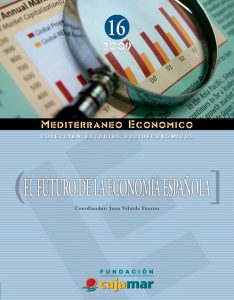
El futuro de la población española
(The future of the Spanish population)
In our analysis of the future demographics of Spain we use both the short (2008-2018) and long-term (2002-2060) forecasts of the Spain’s National Institute of Statistics (INE). The analysis is divided into two main parts:
The first part presents the results of short-term forecasts. We present the general results, followed by results related specifically to Spain’s autonomous regions. The second part comprises the long-term analysis, and is based on general
figures for the entire country.
This information leads us to deduce that Spain’s population is set to grow to 49 million people by 2018, and to 53 million by
2050. At the beginning this increase will be the result of positive numbers in terms of immigration and the birth rate of the Spanish population. After that, this increase will be due to positive immigration numbers only because the birth rate will be negative.
This increase will also provide a positive balance in 14 of Spain’s 17 autonomous regions, but will be accompanied by an increasingly aging population, which will have deep repercussions on the structure of Spain’s economy and society.
Puyol, Rafael (2009) El futuro de la población española. Fundación Cajamar.
http://www.publicacionescajamar.es/pdf/publicaciones-periodicas/mediterraneo-economico/16/16-287.pdf


